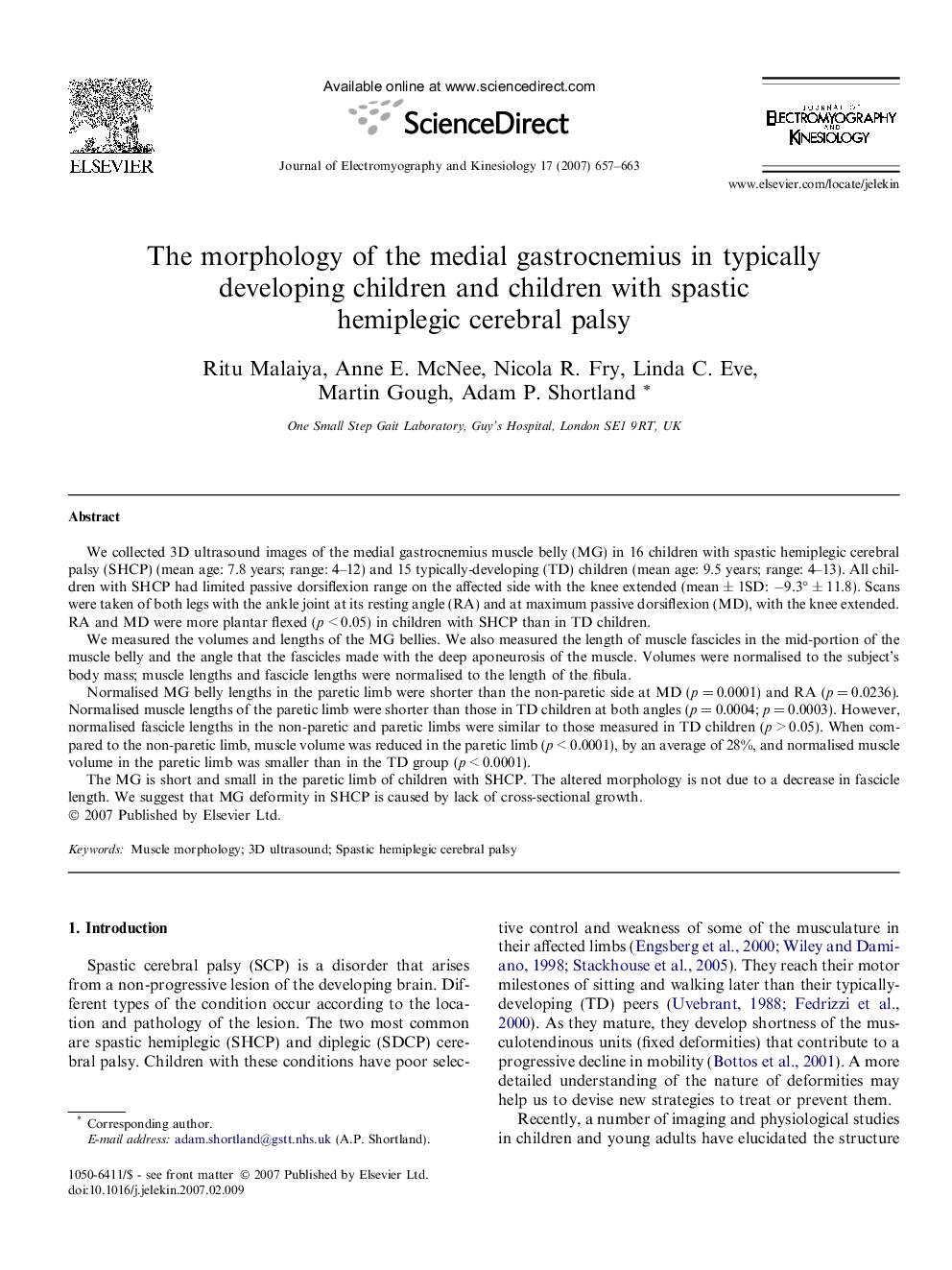| کد مقاله | کد نشریه | سال انتشار | مقاله انگلیسی | نسخه تمام متن |
|---|---|---|---|---|
| 4065695 | 1266266 | 2007 | 7 صفحه PDF | دانلود رایگان |

We collected 3D ultrasound images of the medial gastrocnemius muscle belly (MG) in 16 children with spastic hemiplegic cerebral palsy (SHCP) (mean age: 7.8 years; range: 4–12) and 15 typically-developing (TD) children (mean age: 9.5 years; range: 4–13). All children with SHCP had limited passive dorsiflexion range on the affected side with the knee extended (mean ± 1SD: −9.3° ± 11.8). Scans were taken of both legs with the ankle joint at its resting angle (RA) and at maximum passive dorsiflexion (MD), with the knee extended. RA and MD were more plantar flexed (p < 0.05) in children with SHCP than in TD children.We measured the volumes and lengths of the MG bellies. We also measured the length of muscle fascicles in the mid-portion of the muscle belly and the angle that the fascicles made with the deep aponeurosis of the muscle. Volumes were normalised to the subject’s body mass; muscle lengths and fascicle lengths were normalised to the length of the fibula.Normalised MG belly lengths in the paretic limb were shorter than the non-paretic side at MD (p = 0.0001) and RA (p = 0.0236). Normalised muscle lengths of the paretic limb were shorter than those in TD children at both angles (p = 0.0004; p = 0.0003). However, normalised fascicle lengths in the non-paretic and paretic limbs were similar to those measured in TD children (p > 0.05). When compared to the non-paretic limb, muscle volume was reduced in the paretic limb (p < 0.0001), by an average of 28%, and normalised muscle volume in the paretic limb was smaller than in the TD group (p < 0.0001).The MG is short and small in the paretic limb of children with SHCP. The altered morphology is not due to a decrease in fascicle length. We suggest that MG deformity in SHCP is caused by lack of cross-sectional growth.
Journal: Journal of Electromyography and Kinesiology - Volume 17, Issue 6, December 2007, Pages 657–663